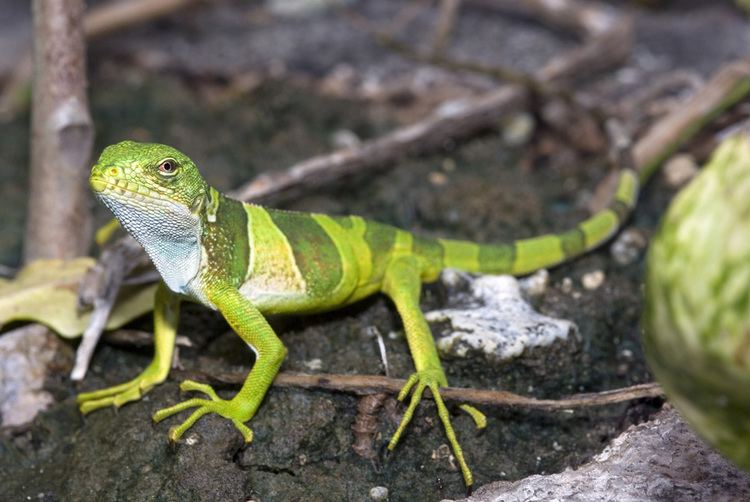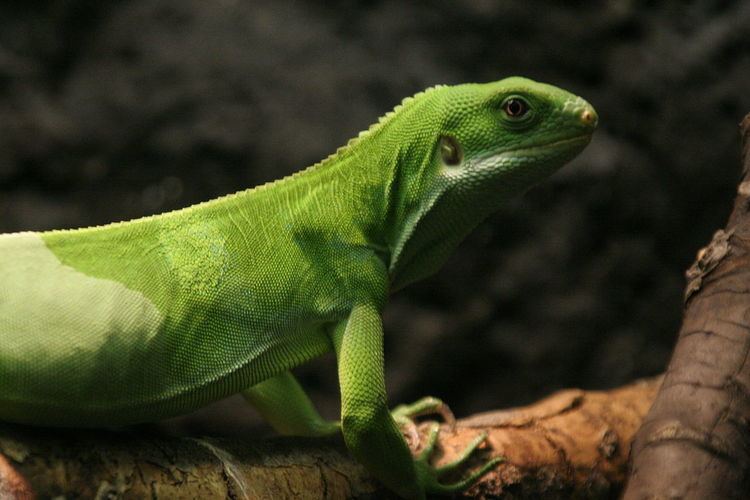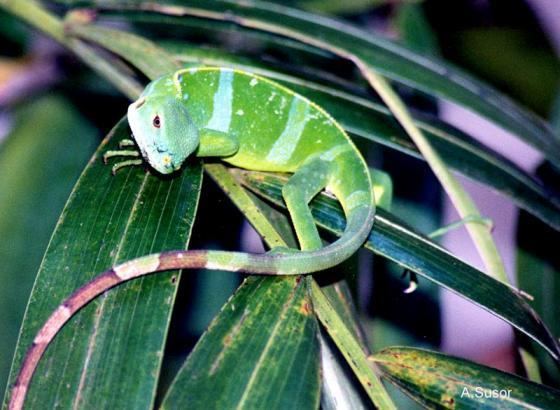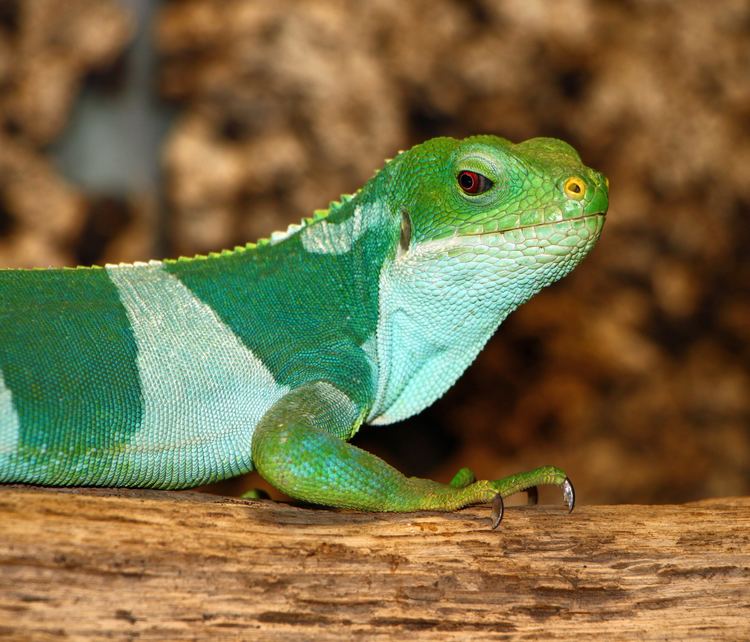Higher classification Iguanidae | Phylum Chordata Suborder Iguania Scientific name Brachylophus Rank Genus | |
 | ||
Lower classifications Fiji banded iguana, Fiji crested iguana, Brachylophus bulabula | ||
For the dinosaur, see Brachylophosaurus
The genus Brachylophus consists of three extant iguanid species native to the islands of Fiji and a giant extinct species from Tonga in the South West Pacific. One of the extant species, B. fasciatus, is also present on Tonga, where it has apparently been introduced by humans.

Etymology and taxonomy

The name, Brachylophus, is derived from two Greek words: brachys (βραχύς) meaning "short" and lophos (λόφος) meaning "crest" or "plume", denoting the short spiny crests found along the backs of these species.

Brachylophus species are the most geographically isolated iguanas in the world. Their closest extant relatives (the genera Amblyrhynchus, Conolophus, Ctenosaura, Cyclura, Iguana and Sauromalus) are present in primarily tropical regions of the Americas and islands in the Galápagos and Lesser and Greater Antilles. Several of these genera are adapted to xeric biomes. The location of members of Brachylophus, so distant from all other known extant or extinct iguanids, has long presented a biogeographical enigma.

These iguanas have been hypothesized to have evolved from New World iguanas that rafted 10,000 km west across the Pacific Ocean with the aid of the South Equatorial Current. While a rafting voyage of four months or more might seem implausible, the ancestors of Brachylophus may have been preadapted for such a journey by having water requirements that can be satisfied by food alone, as well as comparatively long egg incubation periods.

An alternative hypothesis to account for this biogeographical puzzle, based in part on an estimated divergence date of 50 million years ago, is that these species are the descendants of a more widespread but now extinct lineage of Old World iguanids that migrated overland from the New World to Asia or Australia, and then dispersed by some combination of continental drift, rafting and/or land bridges to their present remote location. However, no other fossil or extant species of this putative lineage have been found to date in Southeast Asia, Australasia or the western Pacific outside of Fiji and Tonga.
The extant species are:

Brachylophus bulabula ('bulabula' is the Fijian word for 'healthy' or 'flourishing') was discovered in the central regions of Fiji by a team led by a scientist from the Australian National University. Detailed genetic and morphological analyses were made to conclude that B. bulabula represents a third species.
A giant Tongan species, Brachylophus gibbonsi, similar in size and build to an iguana of the genus Cyclura once existed on Lifuka, islands in the Ha‘apai group and Tongatapu but became extinct in prehistoric times due to predation by humans and their domestic animals.
An even larger extinct iguana of the separate genus Lapitiguana was formerly present on Fiji.
